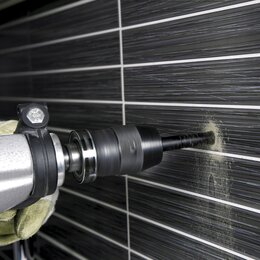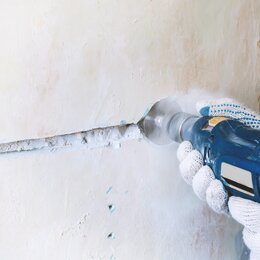Drilling
Drilling in tiles, ceramics or fine stoneware or dry drilling in concrete, clinker, brick, sandstone or masonry - it all depends on the right tool.
Drilling Tiles
When drilling into tiles, there is a risk of the tiles cracking or chipping at the edges of the hole during drilling. You should therefore use suitable tools to drill into tiles, hard-fired tiles, ceramics and fine stoneware. A high-quality tile drill is the right choice here. Make sure you use the right diameter!
Especially for harder tiles, a tile drill with a diamond coating is necessary. Normally, the drill bits are repeatedly cooled with water in between. Not so the CeraDrill drills from Osborn. They are supplied with an integrated cooling liquid that flows out during drilling. This eliminates the need for water cooling. The tip of the drill is coated with diamonds using the vacuum brazing process, ensuring maximum precision and drilling performance.

Please note: Drilling with a diamond drill is carried out at a slight angle to avoid chipping. After spot drilling, drilling is then continued at a right angle.
Dry drilling
Drill holes for sockets, light switches or junction boxes with a socket countersink. Depending on the type, you can use it to drill into concrete, clinker, brick or abrasive materials such as sand-lime brick, sandstone and masonry.

Drilling a socket recess with a socket countersink.